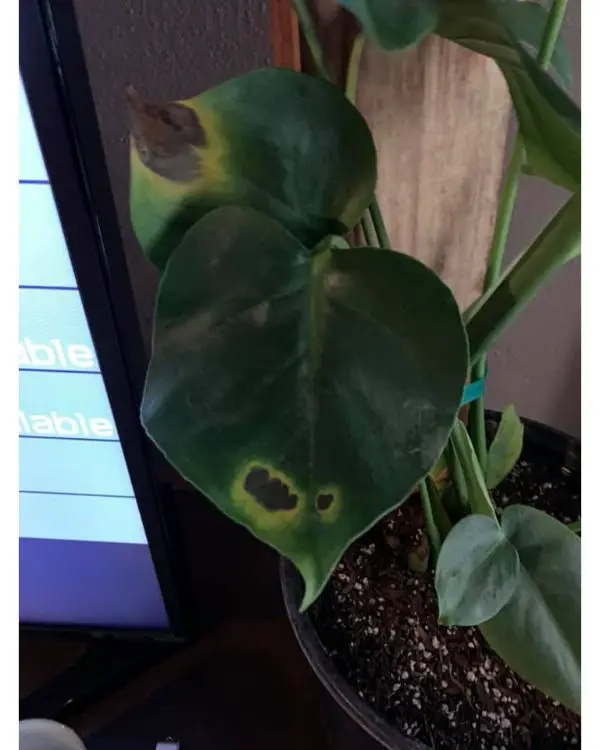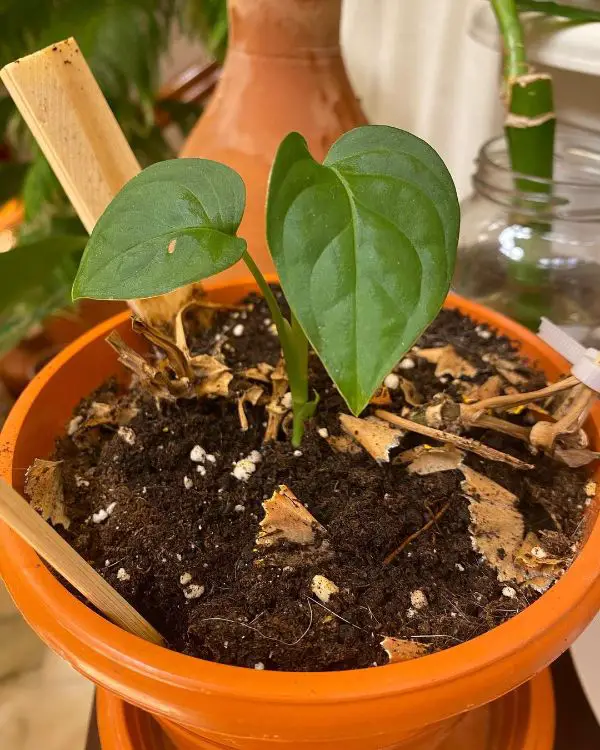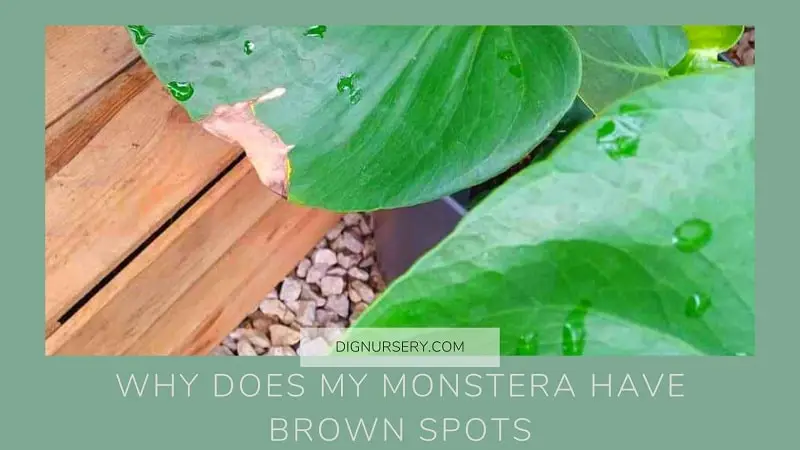When caring for Monstera plants, you may see Monstera leaves with brown spots. At this point, don’t worry too much. Let Dig Nursery help you learn more about the causes of the phenomenon and solutions to overcome this problem below.
Why does my Monstera have brown spots?
Monstera has some reasons to have brown spots on leaves. The most painful thing is that it’s a kind of disease. Several fungi can cause the disease, but mainly two species of fungi called Helminthosporium oryzae and Curvularia lunata.
The first species of fungus causes symptoms. Initially, the lesions are only as small as a light brown needle tip, then gradually enlarge to a slightly oval shape, almost like a sesame seed, with brown, dark brown color on both sides. If conditions are favorable for the disease, the disease will be more significant in some kinds of Monstera
Insufficient hydration commonly causes fungal diseases. Other factors contributing to this problem include light, temperature and humidity, fertilizer, and water, especially its quality. Insects and overexposure to direct sunlight can also cause it. This indicates the presence of other issues, which must be treated as quickly as feasible.
The second is a short striped or amorphous lesion of purple-brown or gray-brown color, sometimes as small, nearly circular brown, purplish-brown, or gray-brown spots. You can see small round sites similar to the disease caused by the first fungus.

What causes the Monstera plant to have brown spots?
Because the phylogenetic conditions of these two fungal species are very similar, on the other hand, the lesions caused by these two species interleaved with each other on the plant.
Brown spot disease develops in nutrient-poor soils such as alkaline soils, semi-mountainous sandy soils along the foothills, or soil contaminated with organic matter. The condition also often occurs in areas that are too soggy or dry, making Monstera lack water and more difficult to absorb nutrients and grow poorly.
The whole leaves turn brown
If whole leaves are turning brown, it is primarily because of the natural growth of the leaves. If the leaves are not old when brown, the plant lacks water.
The tips of the leaves are brown
If the tips of the leaves are brown, it is also a sign that the Monstera is not getting enough water and nutrients. You need to water and supplement soil nutrients.
Brown spots in the middle of leaves
The brown color in the leaves indicates that the Monstera leaves appear with a fungus. You need to find drugs to treat the fungus.
Leaves have brown spots; leaf tips rolled inward
It is a sign that the tree lacks the necessary moisture. It would help if you found a solution to increase the humidity.
Leaves have brown and even black spots, and leaf edges are yellow
If you observe this phenomenon, the tree is getting sunburned. It would help if you moved the tree’s position to avoid placing it in direct sunlight.
What you should do to prevent Monstera from having brown spots
Plow harrow to make the soil thoroughly limit the soil nutrients. Increase the application of lime phosphate fertilizers to accelerate the decomposition of organic matter and raise the pH of the earth, creating conditions for Monstera to grow and develop well.
Always provide adequate water for Monstera, especially at the beginning of the summer-autumn crop when the weather is dry. Suppose there is a lack of alkaline water from the lower soil layer. In that case, it will leak to the cultivation layer, causing root poisoning, making Monstera grow poorly, and leading to fungal disease.
- Must fertilize fully and balance between phosphorus and potassium (especially with voracious varieties), and absolutely must not let Monstera lack nitrogen.
- It is necessary to clean the environment by washing the leaves of Monstera regularly. To limit the problem of fungus growth and at the same time keep the humidity.

Related Post: How to attach Monstera to a moss pole for your own?
Caring for Monstera plants with brown spots
Here are some tips to follow to take care of it with brown spots on leaves: check and adjust the watering schedule, wash plants with pure water, wash soil with pure water. Detecting insect attacks.
Check and adjust the watering schedule
First, you need to observe whether the potting soil is dry or wet to determine and adjust the watering schedule accordingly. If the soil is moist, instead of watering less often with the same frequency, you should water the plant thoroughly but less frequently. For example, if you water your plant every four days, don’t reduce the amount of water and moisten the soil for the same amount of time instead of flooding the plant every two days.
Suppose the soil is dry, water the plants according to the old schedule (e.g., every other day), but more water each time. After a week, you lift the plant out of the pot again and check if the soil is dry. If the soil is still dry, start watering the plant more often (such as daily).
Wash plants with pure water
If your houseplant is not over-or under-watered, and the tips of its leaves are still brown, it could be so because there is too much (one or more types) of minerals—usually salt in the soil. This excess mineral often comes from tap water or fertilizer residue. To wash away the salt or minerals, place the pot over the sink and use purified water to rinse the soil—by filling the pot until a large amount of water comes out of the drainage holes.

Wash the soil with purified water 2-3 times for a few minutes each time
To avoid further problems, you should water the plant with distilled water and reduce the fertilizer applied to the plant.
Look for small holes in the leaves to detect insect attacks
Brown spots or small holes in the leaves of houseplants can be signs of an insect infestation. You need to check the soil and undersides of leaves for lurking insects to diagnose them before the problem gets worse. If you need help identifying insects in houseplants and advice on how to get rid of them, you can contact your local farmer or agricultural association.


